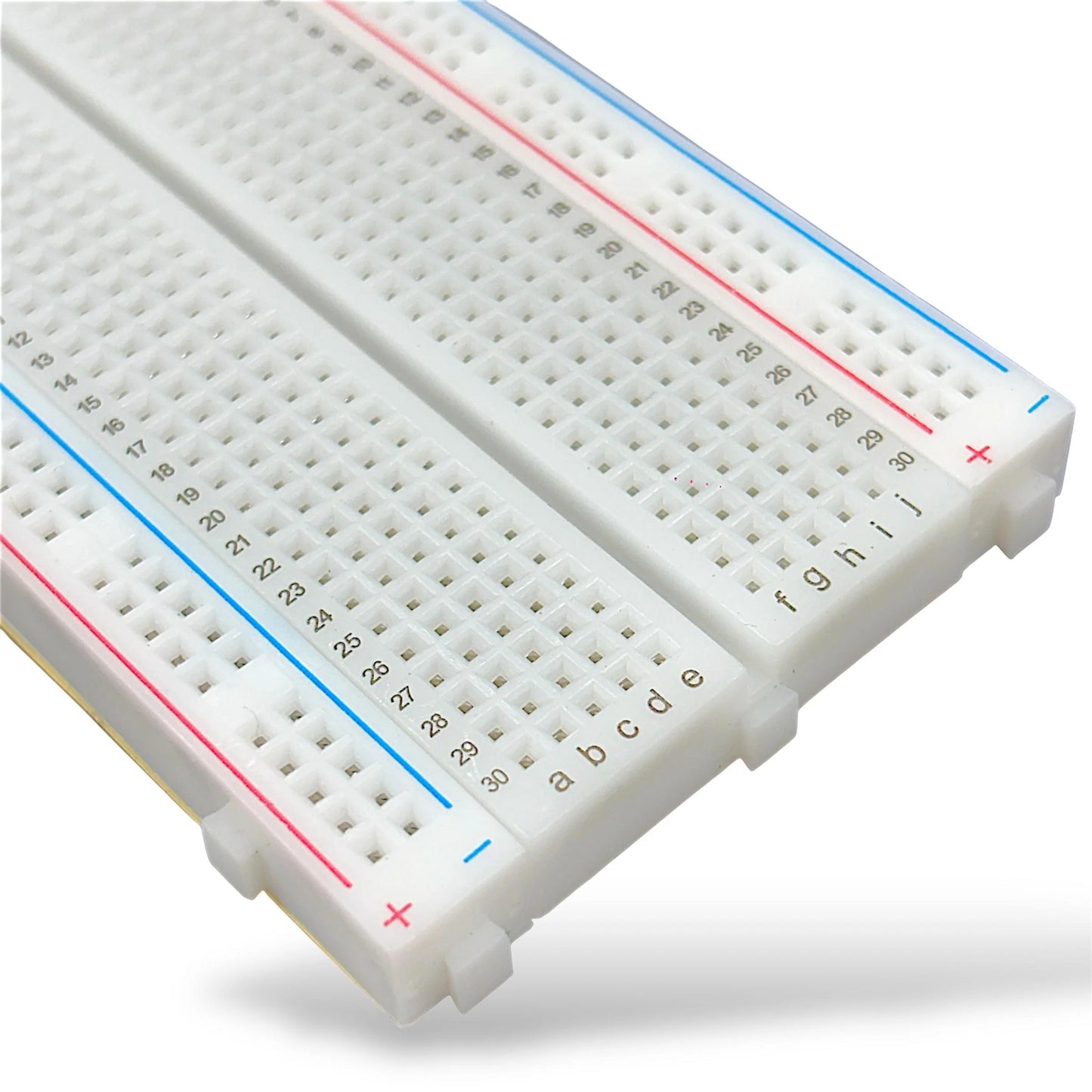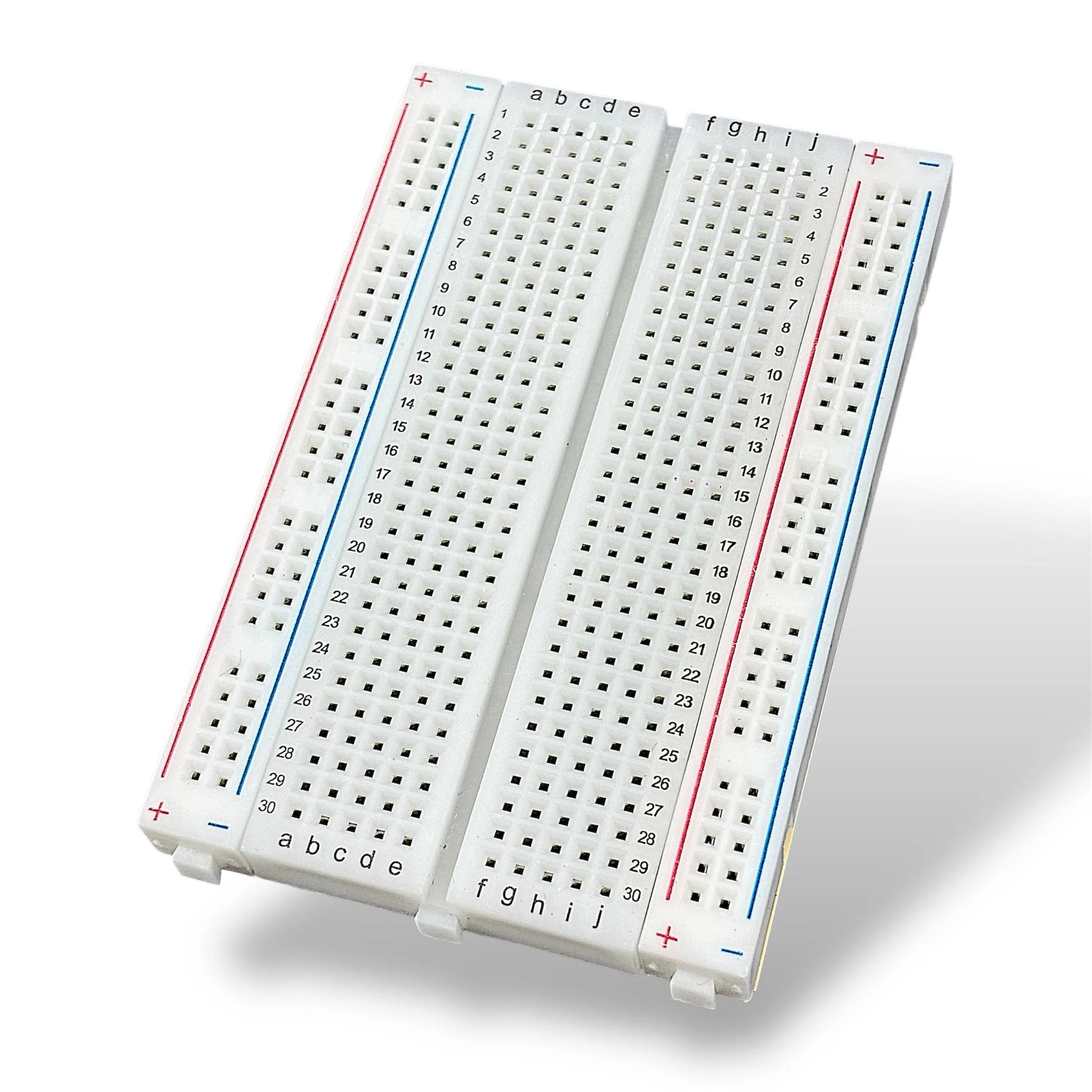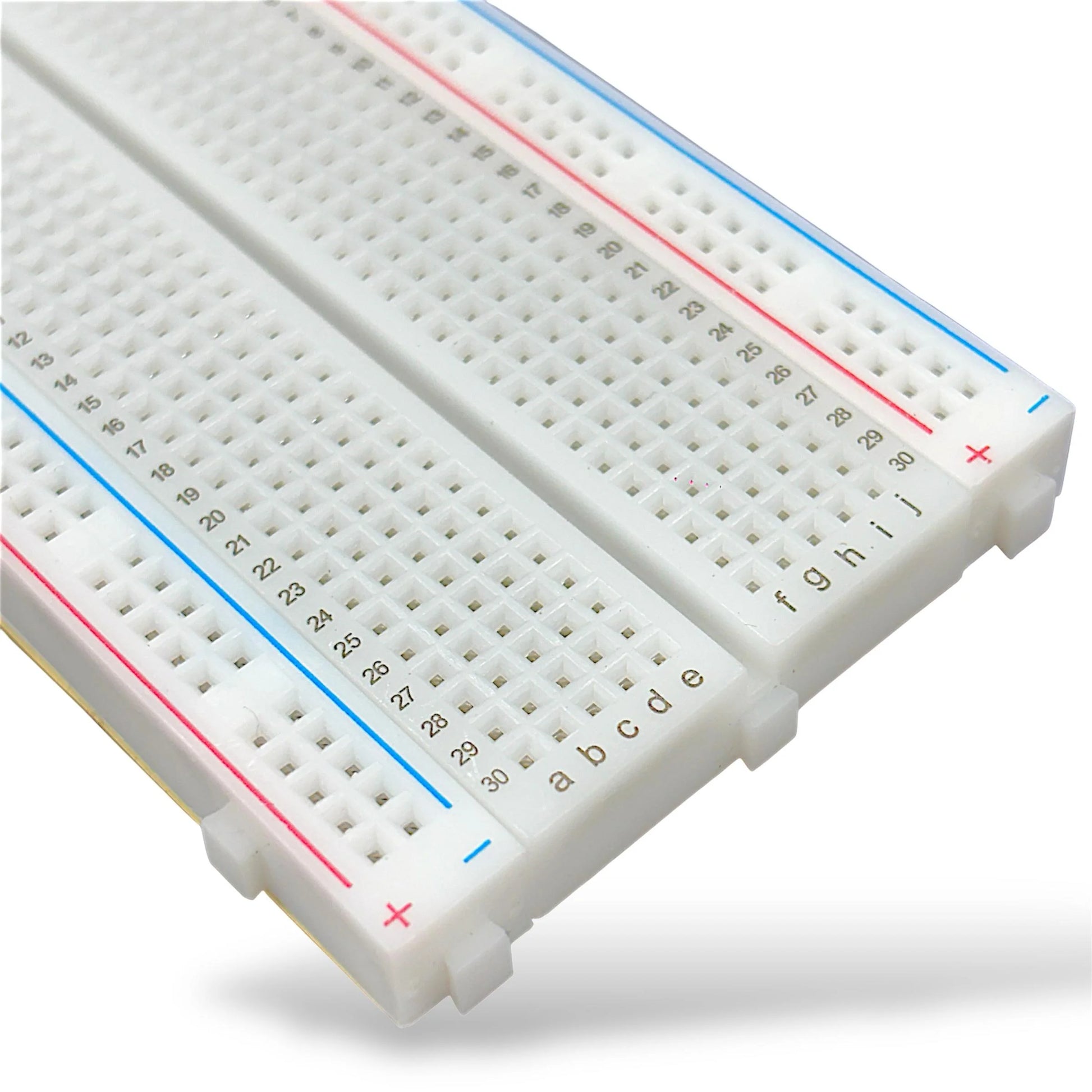Harish Projects
Medium Size Breadboard Solderless 400 tie points
Medium Size Breadboard Solderless 400 tie points
Couldn't load pickup availability
Share
Specification
- 400 tie points
- 2 Power lanes, Total 100 tie points in power lanes
- 1 Double strip, Total 300 tie points
- Perfect for Arduino shield prototyping and testing
- Plastic housing, metal contact clips
Description
A solderless breadboard is a prototyping tool used in electronics to quickly and easily create and test circuits. It consists of a plastic base with a grid of interconnected metal clips or sockets that allow components to be inserted and connected without the need for soldering.
The number “400 tie points” refers to the total number of available connection points on the breadboard. Each tie point represents a location where a component lead or wire can be inserted and connected to other points on the breadboard.
A typical solderless breadboard consists of multiple rows and columns of tie points, with each row typically having a continuous electrical connection. This allows for easy placement and interconnection of electronic components such as resistors, capacitors, integrated circuits (ICs), and other electronic devices.
The 400 tie points indicate that the breadboard has a total of 400 available connection points. These tie points are usually organized in rows, with each row typically having a set number of tie points. The specific organization and layout of the tie points may vary depending on the manufacturer and the size of the breadboard.
To use a solderless breadboard, you would simply insert the component leads or wires into the desired tie points to establish electrical connections. The interconnected metal clips or sockets beneath the tie points provide the necessary electrical continuity for the circuit. This allows for easy and temporary construction of circuits for testing and experimentation purposes.
Solderless breadboards are commonly used by hobbyists, students, and engineers during the prototyping stage of electronics projects. They provide a convenient and reusable platform for quickly assembling and modifying circuits without the need for soldering or permanent connections.
Specs:
A 400 tie points solderless breadboard typically has the following specifications:
1. Size: The dimensions of the breadboard may vary, but a common size for a 400 tie points breadboard is around 8.5 cm x 5.5 cm (3.3 inches x 2.2 inches). However, it’s important to note that sizes can vary among different manufacturers.
2. Rows and Columns: The breadboard is usually divided into multiple rows and columns. A 400 tie points breadboard typically has 30 rows and 10 columns. Each row usually consists of 5 interconnected tie points, resulting in a total of 400 tie points.
3. Connection Layout: The tie points within a row are electrically connected, allowing for easy connection of components in a single row. The columns, on the other hand, are not electrically connected, providing separation between different components or circuit sections.
4. Power Rails: Solderless breadboards often have power rails running alongside the main grid of tie points. These power rails typically consist of two long rows, one for the positive voltage (often denoted as “+”) and one for the ground or negative voltage (often denoted as “-“). The power rails provide convenient power distribution for the circuits.
5. Component Compatibility: The tie points on a 400 tie points breadboard are designed to accommodate electronic components with standard lead sizes. This includes resistors, capacitors, integrated circuits (ICs), transistors, diodes, and other commonly used components. The tie points can hold component leads with diameters typically ranging from 0.3 mm to 0.8 mm (0.012 inches to 0.031 inches).
6. Durability and Reusability: Solderless breadboards are made from durable materials such as plastic and metal clips or sockets. They are designed to be reusable, allowing for easy disassembly and reconfiguration of circuits.
It’s important to note that while the above specifications are common for a 400 tie points breadboard, there can be variations in design and layout among different manufacturers. It’s always recommended to refer to the specific documentation or datasheet provided by the manufacturer for the precise specifications of a particular solderless breadboard.





